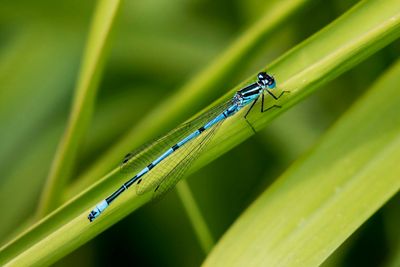What are Damselflies?
Most people know a dragonfly when they see one, but did you know that you may also be looking at a damselfly. Damselfly insects belong to the Odonata order of winged insects. Damselfly species are diverse in appearance, but they all have a few characteristics in common:
A large space between their eyes Wings that are shorter than the abdomen A very skinny body A simple, fluttering style of flying
Damselfly in gardens is a good sign, as these flying hunters will eat smaller pest insects, including a lot of mosquitoes. They are also known for their spectacular colors, which are just fun to see. The ebony jeweling, for instance, has an iridescent, bright green body, and deep black wings.
Are Damselflies and Dragonflies the Same?
These are not the same insects, but they are related. Both belong to the Odonata order, but dragonflies fall into the Anisoptera suborder, while damselflies belong to the Zygoptera suborder. Within these suborders there are more species of dragonfly than damselfly. When it comes to damselfly vs. dragonfly, the most obvious difference is that dragonflies are bigger and more robust. Damselflies are smaller and appear more delicate. The eyes on the dragonfly are much larger and close together; they have large, broad wings, their bodies are large and muscular, and the flight of the dragonfly is more deliberate and agile. You are likely to see them swooping and dipping through the air as they hunt their prey. There are other differences between these two types of insects, including behaviors. Damselflies will hunt in cold temperatures, while dragonflies will not, for example. When resting, damselflies fold their wings in, over their bodies, while dragonflies leave their wings outspread. If you’re lucky, you’ll observe both damselflies and dragonflies in your garden. An abundance of these insects is a sign of a healthy ecosystem. They are also fun to watch and will help you control pest insects.
